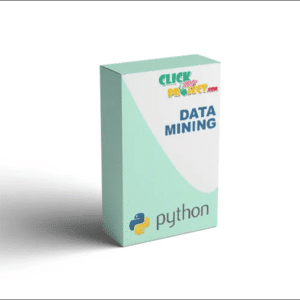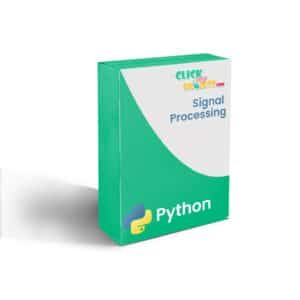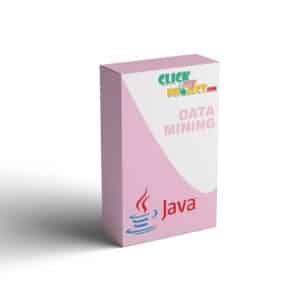


 COMPUTER SCIENCE FINAL YEAR PROJECTS
COMPUTER SCIENCE FINAL YEAR PROJECTS
Doctor & Patient appointment scheduler system
-15%Off
Streamlining Financial Management system
-15%Off
Accuracy Enhancement of Hand Gesture Recognition Using CNN
-15%Off
Dynamic Dual-Graph Fusion Convolutional Network for Alzheimer’s Disease Diagnosis
-15%Off
Multispectral Crop Yield Prediction Using 3D-Convolutional Neural Networks and Attention Convolutional LSTM Approaches
-15%Off
Classification and Prediction of Significant Cyber Incidents using Data Mining and Machine Learning Algorithm
-15%Off
MCAD: A Machine Learning Based Cyberattacks Detector in Software-Defined Networking (SDN) for Healthcare Systems
-15%Off
Classification and Prediction of Significant Cyber Incidents (SCI) Using Data Mining and Machine Learning (DM-ML)
-15%Off
Career search engine with Secure resume up loader
-15%Off
Linear/Non-Linear Energy Harvesting Models via Multi-Antenna Relay Cooperation in V2V Communications
-15%Off
 Electronics & Communication Engineering (ECE) Final Year Projects
Electronics & Communication Engineering (ECE) Final Year Projects
Meta Structural Learning Algorithm With Interpretable Convolutional Neural Networks for Arrhythmia Detection of Multisession ECG
-18%Off
Dawn Of The Transformer Era In Speech Emotion Recognition: Closing The Valence Gap
-15%Off
Accuracy Enhancement of Hand Gesture Recognition Using CNN
-15%Off
Dynamic Dual-Graph Fusion Convolutional Network for Alzheimer’s Disease Diagnosis
-15%Off
Linear/Non-Linear Energy Harvesting Models via Multi-Antenna Relay Cooperation in V2V Communications
-15%Off
Traffic Signal Control with Adaptive Online-Learning Scheme Using Multiple-Model Neural Networks
-15%Off
Brain Tumor Detection and Multi-Grade Segmentation Through Hybrid Caps-VGGNet Model
-15%Off
 Electrical and Electronics Engineering (EEE) FINAL Year Projects
Electrical and Electronics Engineering (EEE) FINAL Year Projects
Three-Leg DC–DC Converter for Efficient Inductive Power Transfer of Electric Vehicles for Wide-Range Battery Applications
-15%Off
Traffic Signal Control with Adaptive Online-Learning Scheme Using Multiple-Model Neural Networks
-15%Off
Brain Tumor Detection and Multi-Grade Segmentation Through Hybrid Caps-VGGNet Model
-15%Off
High Gain Magnetically Coupled Single Switch Quadratic Modified SEPIC DC-DC Converter
-15%Off
Placement and Capacity of EV Charging Stations by Considering Uncertainties with Energy Management Strategies (Copy)
-15%Off
Ecommerce website for nodejs_mysql
-15%Off
PIFA Antenna Design for 4G Wireless Communications
-15%Off
Rice-Fusion: A Multimodality Data Fusion Framework for Rice Disease Diagnosis
-15%Off
 All Domain
All Domain
Doctor & Patient appointment scheduler system
-15%Off
Streamlining Financial Management system
-15%Off
Dawn Of The Transformer Era In Speech Emotion Recognition: Closing The Valence Gap
-15%Off
Accuracy Enhancement of Hand Gesture Recognition Using CNN
-15%Off
Dynamic Dual-Graph Fusion Convolutional Network for Alzheimer’s Disease Diagnosis
-15%Off
 Data Mining Projects
Data Mining Projects
Towards Online Shortest Path Computation
-3%Off
 Image Processing Projects
Image Processing Projects
Multilayer Convolution Neural Network for the Classification of Mango Leaves Infected by Anthracnose Disease
-4%Off
Texture Classification Using Dense Micro-Block Difference
-4%Off
 Signal Processing Projects
Signal Processing Projects
Epileptic Seizure Prediction Based on Multivariate Statistical Process Control of Heart
-4%Off
Brain Dynamics in Predicting Driving Fatigue Using a Recurrent Self-Evolving Fuzzy Neural Network
-4%Off
ICA With CWT and k−means for Eye-Blink Artifact Removal From Fewer Channel EEG
-15%Off
Best Final Year IEEE Projects for CSE, ECE, EEE and all Computer Projects
-
Instant Delivery
Get your project with 24 hrs
-
Secure Payment
We value your security
-
Online support
We have support 24/7
-
Value for Payment
100% statifaction gurantee
Latest Blog
11 Dec 2025
The MERN stack comprising MongoDB, Express.js, React, and Node.js—is the...
01 Dec 2025
A Web application project is, at its core, a software...
11 Nov 2025
The modern digital world is inextricably linked to silicon. From...





































